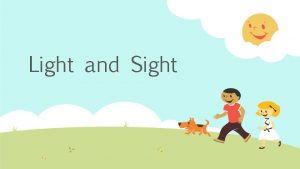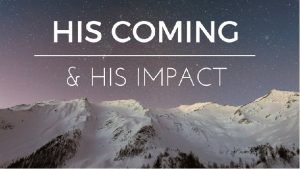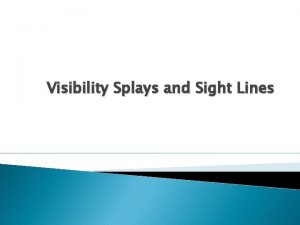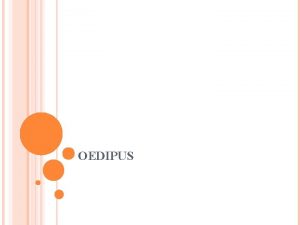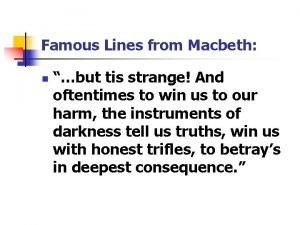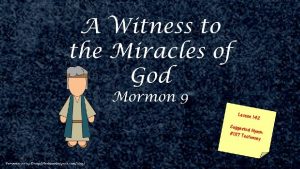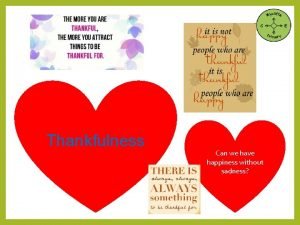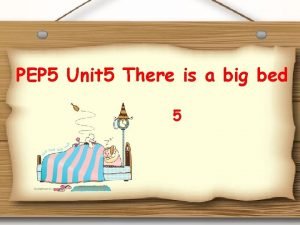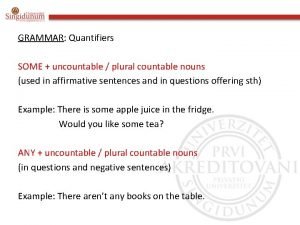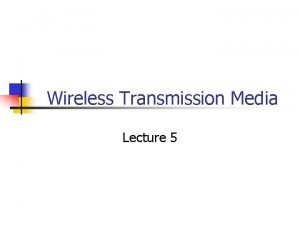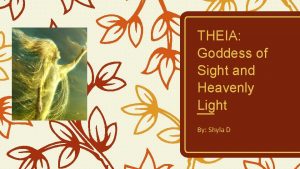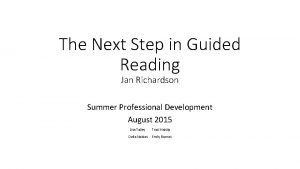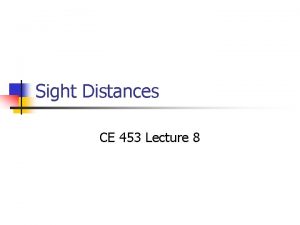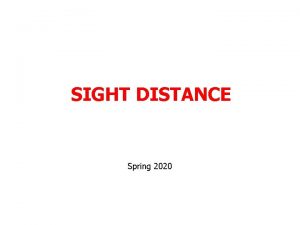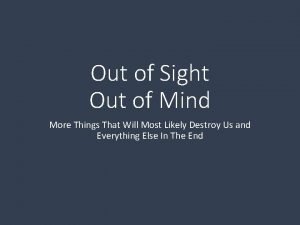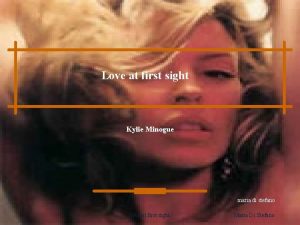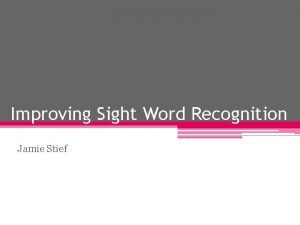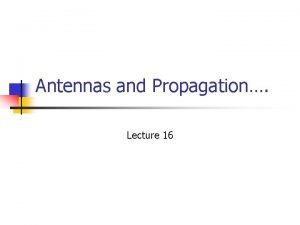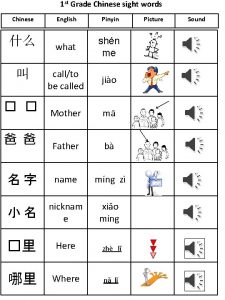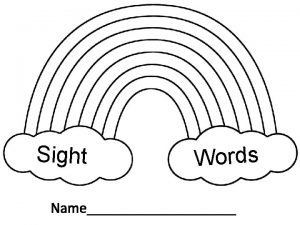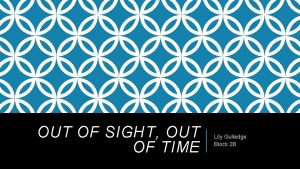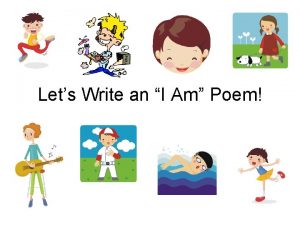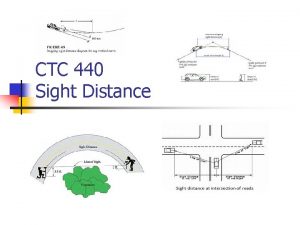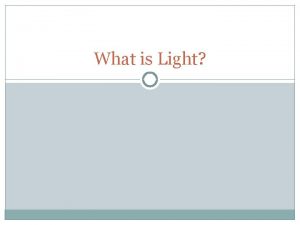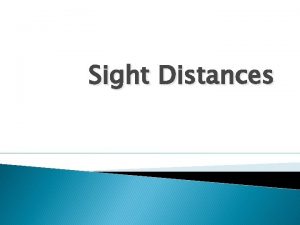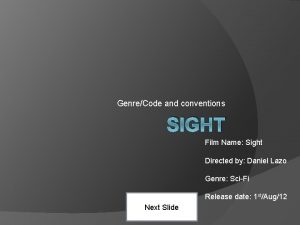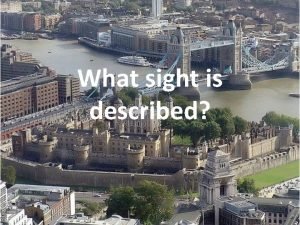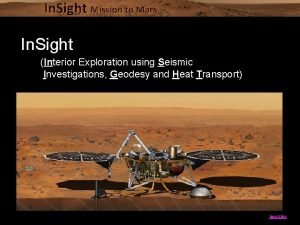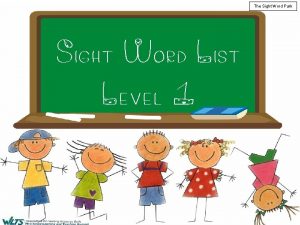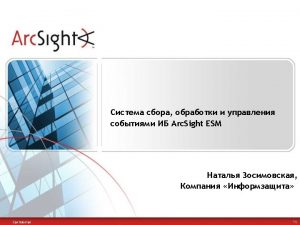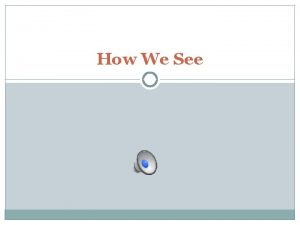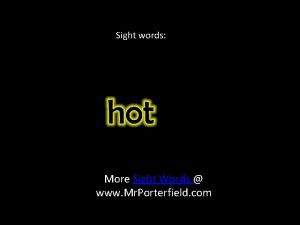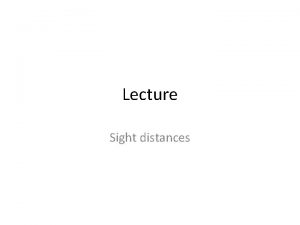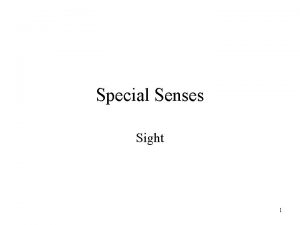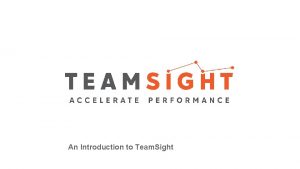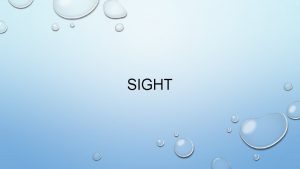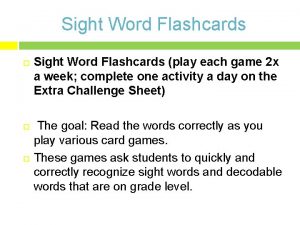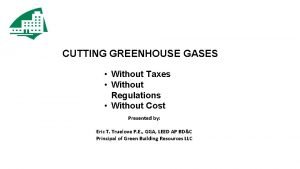Light and Sight Light Without light there is



































- Slides: 35

Light and Sight

Light § Without light, there is no sight. § There's an interaction occurring between light, your eyes, and your brain. § When light reaches our eyes, signals are sent to our brain. Our brain will then detect what were seeing.

Light cont. § If the room had no windows or open doors, the room would look dark. § Your brain would decipher this as no light and everything would look black. § Black is a sign that there is an absence of light.

Why is an image formed? §In order to view an object, you must sight it along a line at that object. §When you do, light will come from that object to your eye. §This path is called the line of sight.

Viewing an object in a plane § When we talk about a flat mirror we see this occurring. (light comes to your eye from that line of sight. ) § The location of the image is located at that position where observers are sighting when looking at an object.

Image formation for plane mirrors § When you look at a mirror, you don’t see the object. It actually appears to be farther, (inside the mirror). § When you look at a mirror the rays are reflected. (youre seeing a lot of objects reflecting off the mirror in different directions). § Only a small portion of these rays will reflect off the mirror and travel to your eye. § To see something in the mirror you have to look at it. (Duh. ) § When you do this, reflected rays of light will travel from the mirror to your eyes along your line of sight.

§ All people see reflected rays of light as they see the image in the mirror, the image location MUST be where these points intersect. § BUT HOW.


So whats happening? § The person sits in front of a plane mirror. § The mirror produces an image. § This image is on the opposite side of the mirror. § The distance from the object to the mirror = Distance from image to mirror. § The image location is the intersection


If he cant see it is it still there?


Virtual images § Since we are looking at a plane mirror, the image is a virtual image. § Virtual images are images that are formed in location where light does not actually reach. § Light doesn’t actually pass to the other side of the mirror, it only appears too.

Left-Right Image Reversal § The second characteristic is image orientation. § If you look in a mirror and lift your right hand, it looks like the mirror is lifting its left hand. § This is the left-right reversal. § There is no top-bottom reversal. (When you look in a mirror and your standing up, it doesn’t look like your hanging upside down)

Object distance and image distance § The third characteristic is something we have covered. The objects distance is equal to the image distance. § If you stand 2 meters from a plane mirror, your image is 2 meters behind the mirror.

§ Fourth characteristic of plane mirror images is that the dimensions of the image are the same as the dimensions of the object. § If you are 5 ft then your image is 5 ft. § This is referred to magnification: The ratio of the image dimensions to the object dimensions. § Plane mirrors produce an image with a magnification of 1.


§ 1. You might have noticed that emergency vehicles such as ambulances are often labeled on the front hood with reversed lettering (e. g. , ECNALUBMA). Explain why this is so.

§ 2. If Suzie stands 3 feet in front of a plane mirror, how far from the person will her image be

Reflection and the locating of images § Ray has to be in the sight of light. The ray is above the image. The angle of incidence is less than angle of reflection. DOESN’T FOLLOW LAW OF REFLECTION The ray is above the image. The angle of incidence is greater than angle of reflection. DOESN’T FOLLOW LAW OF REFLECTION

A= Ray of incidence B=angle of incidence C=angle of reflection D=Ray of Reflection What’s this line?

A ray of light is incident towards a plane mirror at an angle of 30 degrees with the mirror surface. What is the angle of reflection?

Ray Diagrams §A ray diagram is a diagram that traces the path that light takes in order for someone to view a point on the image of an object. § Arrows are drawn from the incident ray and the reflected ray.

How to draw a ray diagram § 1. You should have your mirror and item drawn. Draw the image of the object. § § 2. Figure out where your eye goes. § § Use the principle that object to mirror = mirror to image. Where will you be viewing this image. 3. Draw the line of sight FROM IMAGE § From image to mirror is a dotted line, (There's nothing behind the mirror) § Solid line from mirror to eye. § 4. Find your normal from the mirror point. § 5. Find the Incident beam



• Al can see Ed and Fred • Bo can see Ed, and Fred • Cy can see himself, Di, Ed, and Fred • Di can see Cy, Di, and Ed. • Ed can see Al, Bo, Cy, Di, and Ed • Fred can see Bo, Cy, and Ed Who can see who?

How much mirror do I need to view an image? § There is a 1: 2 ratio between the amount of mirror required to view an image and the height of the object that is being observed. 1. If a mirror shows the full image at 3 ft, how tall is the man? 2. If a girl is 6’ 4”, how much mirror does she need to see a complete image?

Curved Mirrors § Were done with flat mirrors. Now were going to see when mirrors have a spherical shape. § There are two types of mirrors § § 1. Concave § 2. Convex Think of these terms as being a slice of a sphere. Which is the inside of a sphere and which is a sliver of the outside of the mirror? Are you in the bubble or not?

§ If you’re in the bubble, its concave. This means that there is a converging mirror. All the rays come together. § If you’re out of the bubble, its convex. Convex means that the rays diverge.

Words we need to know for concave mirrors § Principal axis. A line perpendicular to the mirror. Is located at the center of the mirror. § Center of curvature: The point in the center of the sphere where the mirror was sliced. § Vertex: Where the principal axis meets the mirror. The geometric center of the mirror. § Focal point: Between the vertex and center of curvature. § Radius of Curvature: The distance from the vertex to the center of the curvature. § Focal length: Distance from the mirror to the focal point.

Center of curvature Radius of Curvature Vertex Focal Length Focal Point

Question § If the surface of towards the sun, from the mirrors curvature is 150 a concave mirror is pointed how far is this converging point surface if the radius of cm? 1. Go from CM to m 2. 1. 5 m 3. Radius of curvature is 1. 5 m. The focal length is half of the radius. 4. Light converges at the focal point. 5. Answer: . 75 m

Two rules of reflection for concave § The law of reflection always applies, even to curved surfaces. § 1. Any incident ray traveling parallel to the principal axis on the way to the mirror will pass through the focal point upon reflection. § 2. Any incident ray passing through the focal point on the way to the mirror will travel parallel to the principal axis upon reflection.

Drawing Ray diagrams for concave mirrors For parallel Draw object Draw parallel line to the mirror When reflecting it MUST go through the focal point.
 Light and sight
Light and sight Without light there is no darkness
Without light there is no darkness The father in the poem without title
The father in the poem without title Without title poem
Without title poem Without rush without engines poetic device
Without rush without engines poetic device Vision splays
Vision splays Oedipus eyes
Oedipus eyes Blindness in king lear
Blindness in king lear But 'tis strange and oftentimes
But 'tis strange and oftentimes Beach side sight
Beach side sight Without repentance there is no salvation
Without repentance there is no salvation Happiness without sadness
Happiness without sadness Pep unit
Pep unit Countable and uncountable there is there are
Countable and uncountable there is there are Sightseeing countable or uncountable
Sightseeing countable or uncountable Light light light chapter 23
Light light light chapter 23 Into the light chapter 22
Into the light chapter 22 Light light light chapter 22
Light light light chapter 22 Line of sight propagation
Line of sight propagation Goddess of sight
Goddess of sight Jan richardson sight words
Jan richardson sight words Formula of ssd
Formula of ssd Stopping distance formula
Stopping distance formula Out of sight out of mind quotes
Out of sight out of mind quotes Kylie minogue love at first sight
Kylie minogue love at first sight Sight word ninja
Sight word ninja Fry instant phrases
Fry instant phrases Antenna gain formula examples
Antenna gain formula examples Canty camera
Canty camera Chinese sight words
Chinese sight words Truesight operations slide
Truesight operations slide Rainbow words sight words
Rainbow words sight words Out of sight out of time
Out of sight out of time How to write a i am poem
How to write a i am poem Stopping sight distance formula aashto
Stopping sight distance formula aashto Hind sight bias
Hind sight bias
